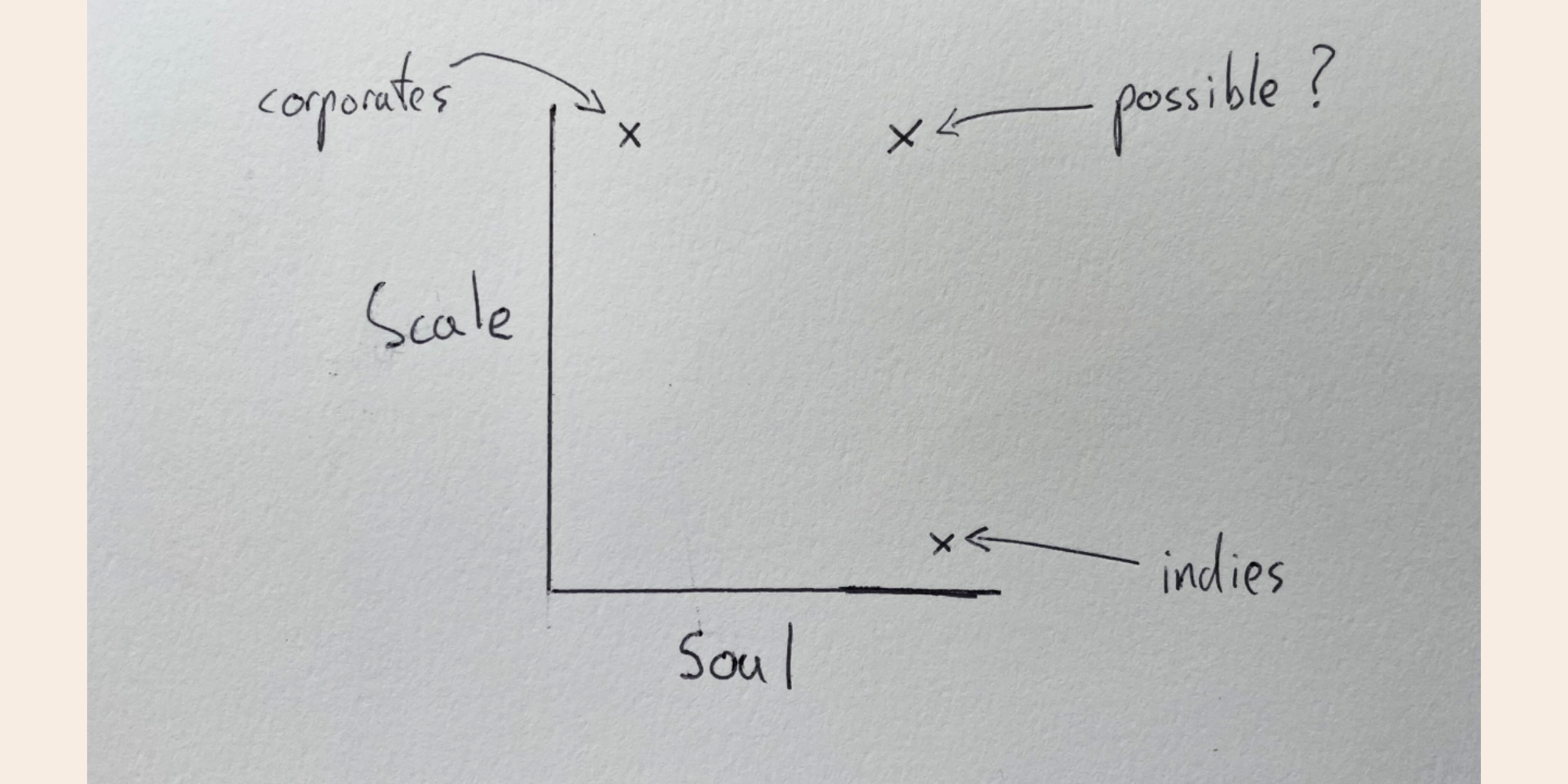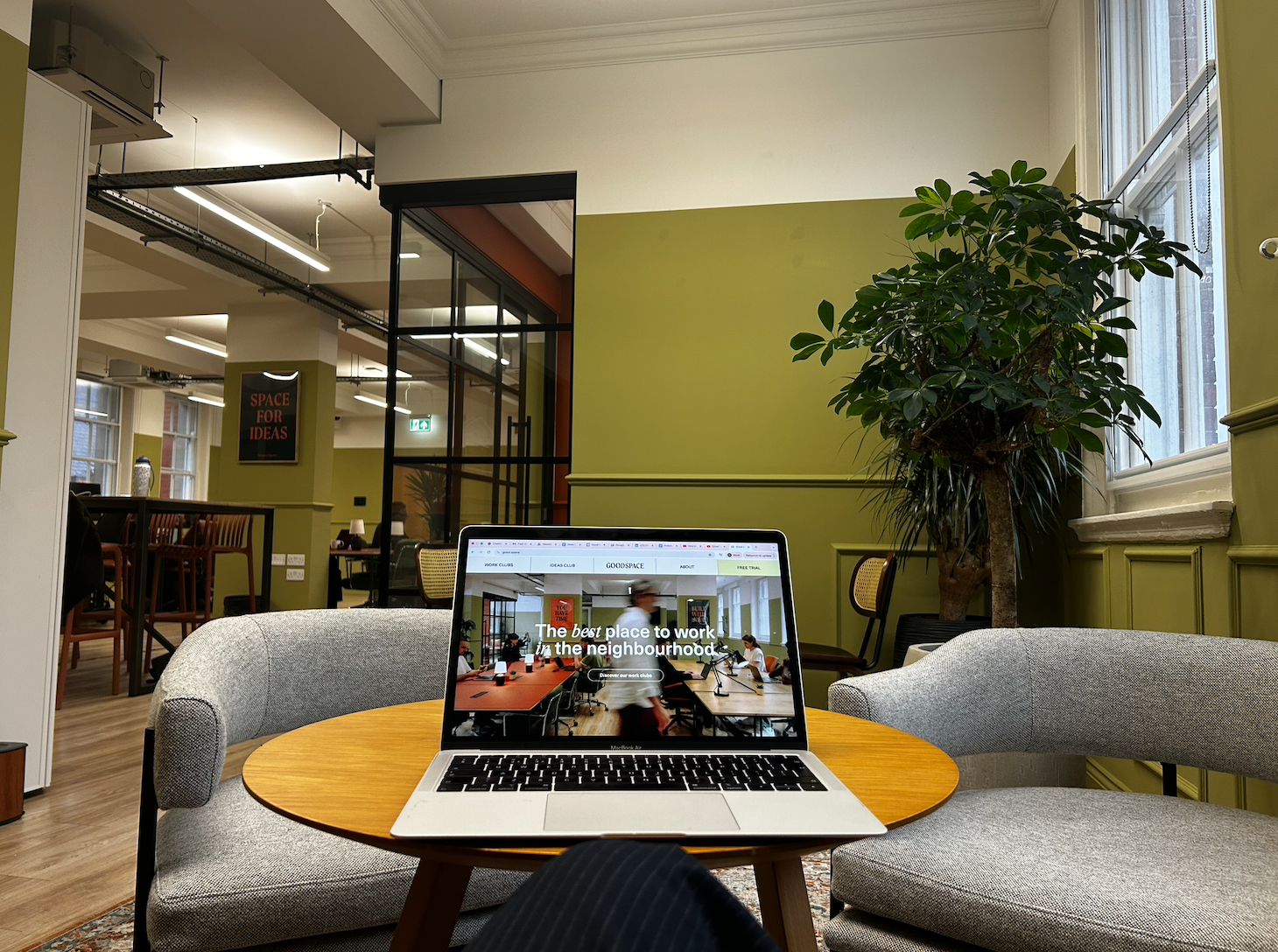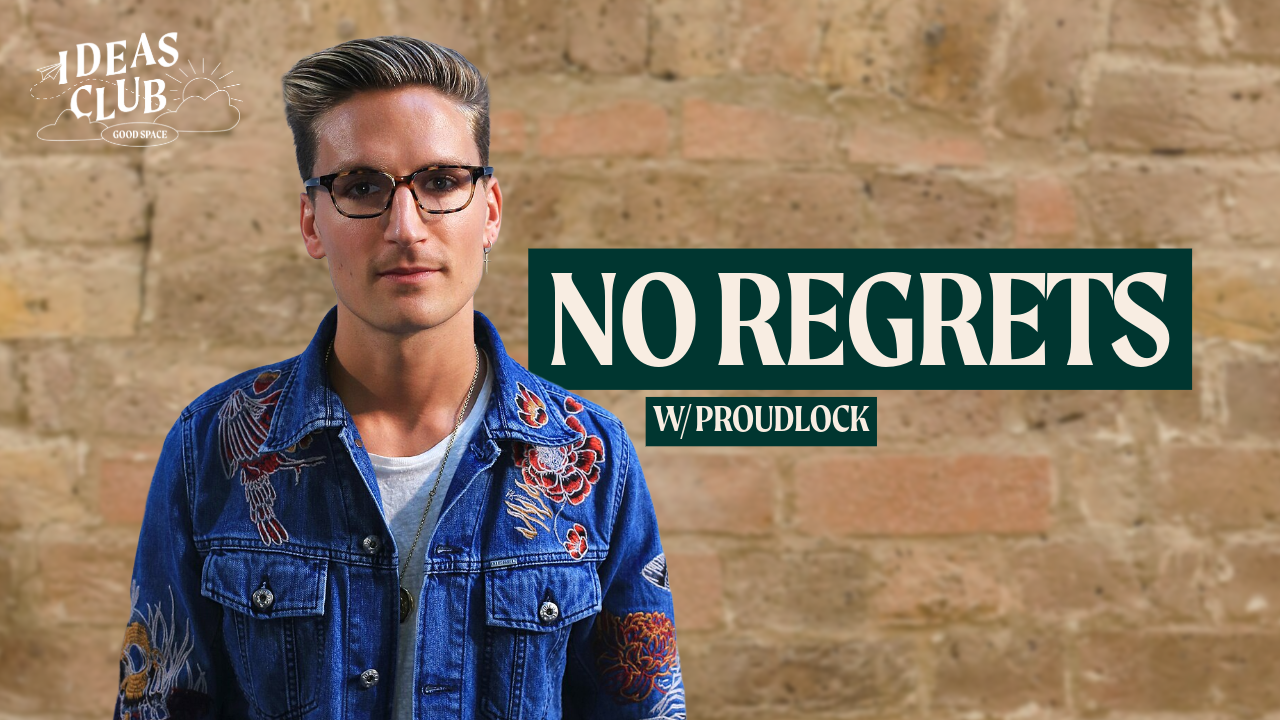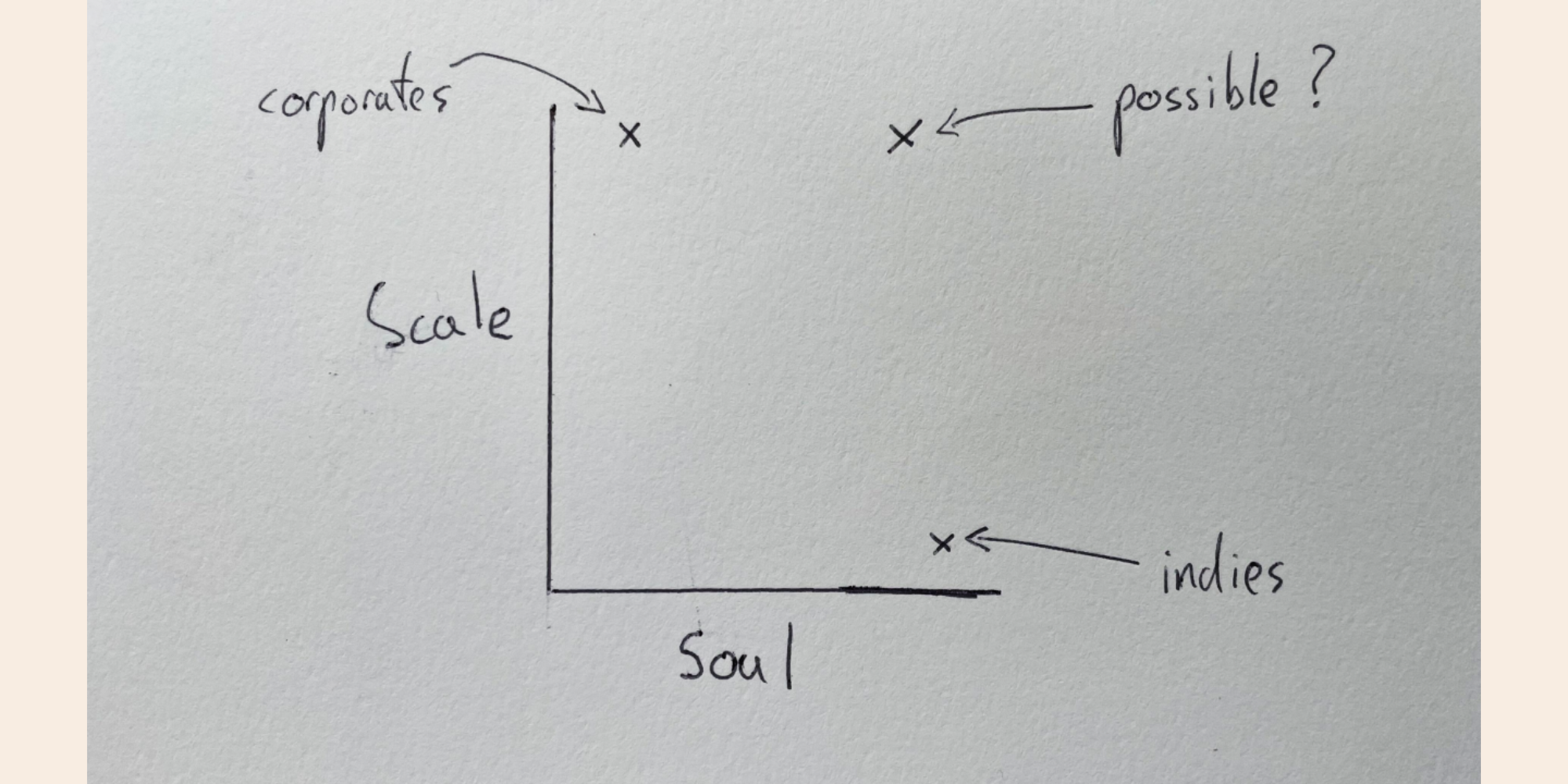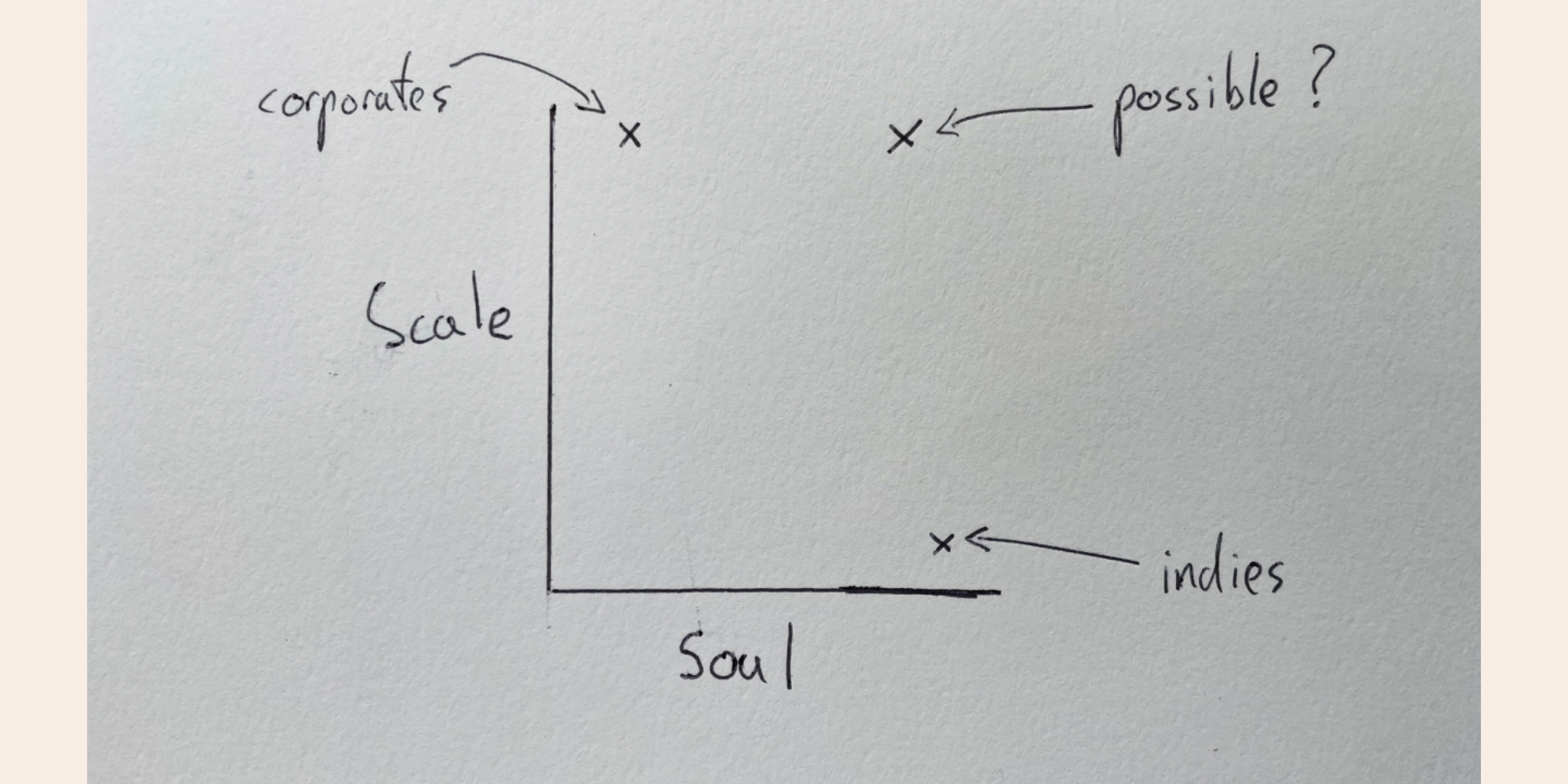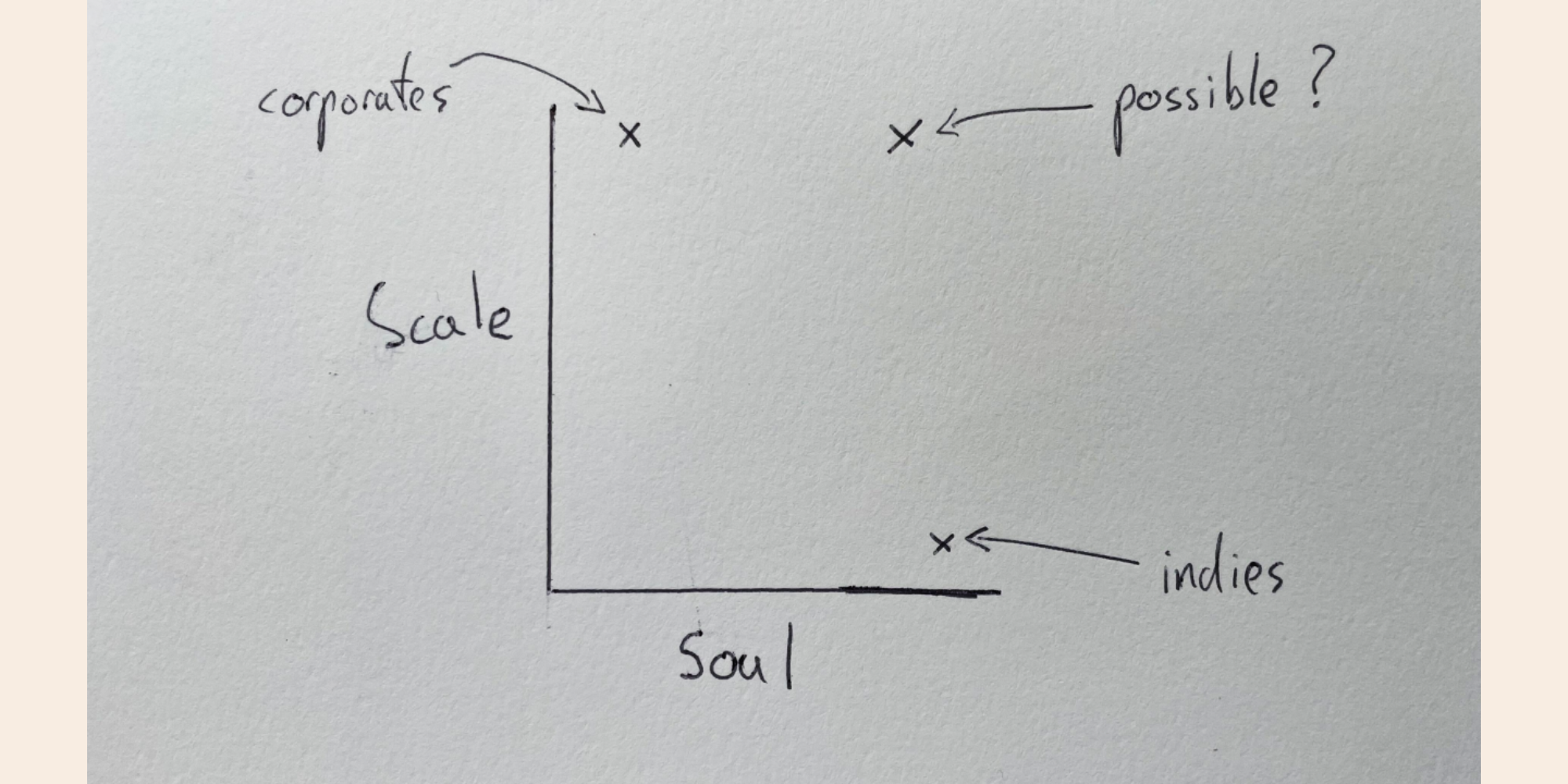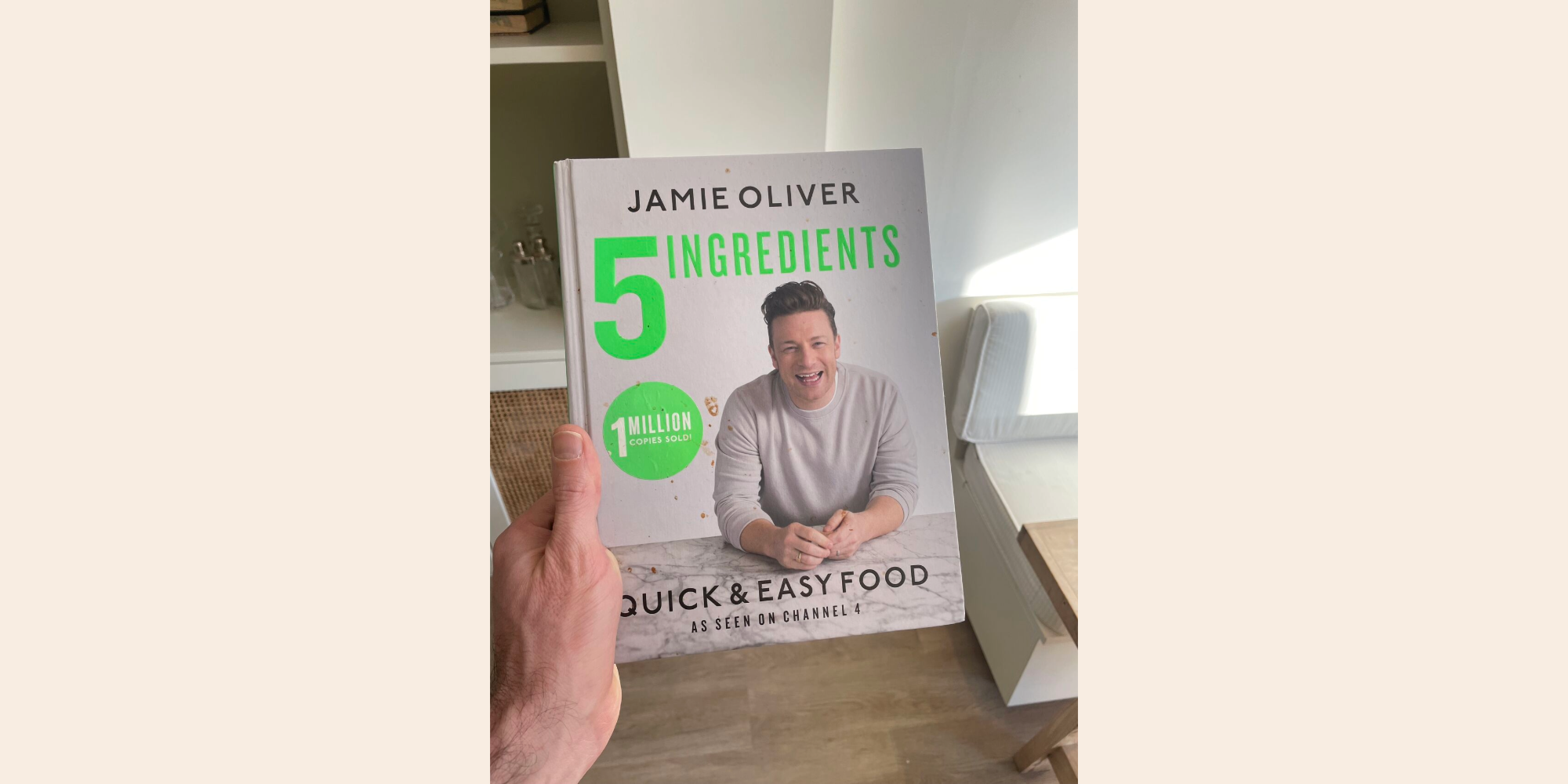This is the first in a four-part series of articles on ‘scaling with soul’.
Small, indie businesses often do well on the soul bit, but struggle to scale or deliver a curated experience. Larger businesses might quickly grow their footprint - but often end up feeling identikit and transactional.
So how do you hold these two conflicting goals of ‘scale’ and ‘soul’ in tension? It’s such a big question I suspect there is no point at which you arrive at the final answer. But I thought it would be interesting to share some of the things we’ve learned so far on the journey at Good Space.
The vicar of my church used to tell this story about when he went to go watch his son play football on Clapham Common.
When he arrived all the kids and parents were there, but the referee was running late.
So Nicky (my vicar friend) decided to step in and get the game going before the ref arrived. Needless to say the whole thing was a complete shambles. The goals were in the wrong place, there were no boundaries marked out to demarcate the pitch, it wasn't clear what the goalie could or couldn’t do. The game was a mess and the kids were frustrated.
Then to Nicky’s relief the ref arrived. He sharply blew his whistle, organised the teams, ring fenced the pitch and clearly stated the rules of play. And just like that the kids had a great game and loads of fun.
I find that story fascinating from the perspective of building processes and systems.
It would be easy to assume that boundaries and constraints inhibit freedom. But actually far from it. They provide the very framework that allows you to go and creatively express yourself (and have fun). A game with no rules is no game at all.
We eventually came to that realisation at Good Space. But it took us a while. And probably because when we launched we were so passionate about our sense of freedom and independence.
Our vision was for each new work club to be proudly independent. We love that feeling you get from your favourite indie book store or cafe.
Give me half a chance and I’ll rave to you about Saucer and Cup, my local, family-run cafe. The owners have so much pride in it and so much passion for how its run. That oozes out of the entire experience, which of course includes the coffee and food. But it also feels like a place where ‘everybody knows your name and they’re always glad you came.’ Certainly the owners know your name. As a local I feel heavily invested in Saucer and Cup - I won’t hear a bad word about it!
But I don’t feel nearly as invested in the local Gails or Cafe Nero. Corporate chains are good at consistently repeating a product, but not always so great at reflecting a local area or bringing a unique sense of personality and warmth.
With this in mind we branded each venue completely independently. We even gave each one its own website.
The sentiment behind this strategy was sound. And we realised loads of advantages off the bat. The Community Managers felt a huge sense of ownership of the venue, they were able to imprint their own personality on it, and members loved the fact the space felt unique to the area. They felt the same sense of local neighbourhood pride I felt with Saucer and Cup.
But we discovered some major challenges.
Firstly, as a support team, the level of support we were able to give each venue was limited by this multi-brand approach. One example - for things like signage and wayfinding, we wanted to create illustrations around the work club, but we needed to do this for four different brands, in four different ways.
What we also perceived as freedom to Community Managers, actually often manifested itself as chaos. They had the ‘freedom’ to put their stamp on everything. But in reality this meant that whenever they came to something, they had to invent a new version of it. Every Community Manager would need to compile their own 1000 song playlist, come up with their version of member onboarding, devise their approach to events…The list goes on.
They were reinventing the wheel over and over.
As you can imagine this sapped their energy, and it took their focus away from the core of their job (hosting people).
What’s more they had to act like a swiss army pen knife, and no matter how much of a generalist someone is, none of us are great at everything. Where their strengths lied the work club excelled, but where they were operating outside of their sweet spot they were in need of support.
So this posed an important question. How do you retain a sense of ownership and creative autonomy with the venue teams, and at the same time have the necessary systems and frameworks in place?
Thinking back to Nicky’s game of football on Clapham Common, we needed the Referee to step in and blow the whistle.
And we learned a big lesson: complete freedom is in fact no freedom at all.
Jim Collins illustrates this point really well in his book Good to Great.
He says imagine an airline pilot. She must methodically work through the pre-flight check list and because of air traffic control she’s obliged to operate within a very strict system. She doesn’t have freedom to go outside that system. Imagine the chaos if she suddenly ‘felt empowered’ to reinvent the launch procedure every time!
But…the crucial decisions on whether to take off, whether to land, whether to abort, rest with her. Regardless of the strictures of the system, one simple thing stands out above the others. The pilot has ultimate responsibility for the airplane and the lives of the people on that plane.
Jim Collin’s research revealed that companies that outperform others had something in common - they built a consistent system, with clear constraints - and then also gave people freedom and responsibility withinthe framework of that system.
Freedom vs a framework?
Freedom within a framework?
‘Freedom within a framework’ is a nice sounding mantra. But it begs the follow up question:
How do you actually go about applying this principle within your company?
Next up I’ll share how we applied it, and how, far from restricting our team, it actually led to them being more empowered.
Jamie
#scalingwithsoul
